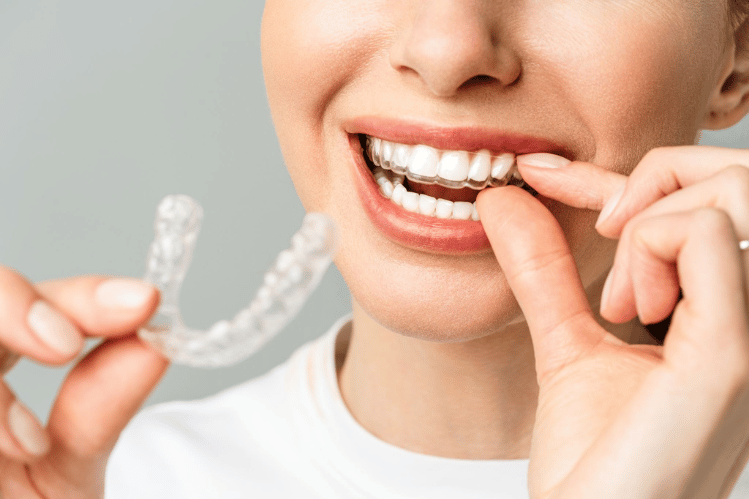Legacy Orthodontics Fundamentals Explained
Legacy Orthodontics Fundamentals Explained
Blog Article
Legacy Orthodontics Fundamentals Explained
Table of ContentsNot known Details About Legacy Orthodontics Getting The Legacy Orthodontics To WorkThe Ultimate Guide To Legacy OrthodonticsLegacy Orthodontics for BeginnersHow Legacy Orthodontics can Save You Time, Stress, and Money.
In addition, we supply flexible treatment timetables, flexible payment options and a fun, satisfying experience.An orthodontist is a dental professional trained to identify, prevent, and deal with teeth and jaw irregularities. They remedy existing conditions and are trained to identify issues that might establish in the future. Orthodontists function with people of every ages, from children to adults. Individuals commonly associate a perfect smile with health.
Malocclusion, or misaligned teeth, can bring about oral problems, including tooth degeneration, gum disease, and tough or excruciating eating. Not everyone is birthed with straight teeth. If you have a poor bite or big areas in between your teeth, you might want to speak with a dentist concentrating on orthodontic treatment.
The 10-Minute Rule for Legacy Orthodontics
( Picture Credit Rating: DigitalVision/Getty Images) Orthodontists utilize fixed and detachable dental devices, like dental braces, retainers, and bands, to change the position of teeth in your mouth. Orthodontic treatment is for dental irregularities, consisting of: Crooked teethBite troubles, like an overbite or an underbiteCrowded teeth or teeth that are as well far apartJaw misalignmentThe goal of orthodontic treatment is to boost your bite.
A healthy bite ensures you can eat, eat, and talk appropriately. While you could consider orthodontists as generally for children or teens who need braces, they can correct oral issues at any type of age. Orthodontists participate in college, dental institution, and orthodontic institution. After college graduation, they spend 2 or 3 years in an orthodontic residency program.
, but not all dental professionals are orthodontists. They concentrate on 2 areas: How to effectively and securely move teeth How to appropriately guide growth in the teeth, jaw, and faceOnce an orthodontist has finished training, they have the choice to become board accredited.
Not known Facts About Legacy Orthodontics
Imbalance, or malocclusion, is one of the most typical factor individuals see an orthodontist. It is genetic and is the result of size distinctions between the upper and lower jaw or in between the jaw and teeth. Malocclusion results in tooth congestion, an irregular jaw, or uneven bite patterns. Malocclusion is normally treated with: Your orthodontist connects metal, ceramic, or plastic square bonds to your teeth.
If you have only minor malocclusion, you may be able to utilize clear dental braces, called aligners, rather than traditional dental braces (https://www.metooo.io/u/legacyortho). Some people need a headgear to aid move teeth into line with pressure from outside the mouth. After braces or aligners, you'll need to use a retainer. A retainer is a personalized tool that maintains try this your teeth in position.
They're usually used on youngsters. They can create added space in the mouth without needing to pull teeth. If you have a major underbite or overbite, you may need orthognathic surgical procedure (likewise called orthodontic surgical treatment) to extend or shorten your jaw. Orthodontists use cables, surgical screws, or plates to sustain your jaw bone.
You might need to see an orthodontist if you have: Crowding or otherwise adequate room for every one of your teethOverbite, when your top teeth come your bottom teethUnderbite, when your base teeth are also far forwardSpacing or issues with gapsCrossbite, which is when your top teeth fit behind your base teeth when your mouth is closedOpen bite or an upright void in between your front base and upper teethMisplaced midline, when the facility of your base and top teeth don't align Fixing a dental malocclusion can: Make biting, chewing, and speaking easierImprove the proportion of our face and your general appearanceEase discomfort from temporomandibular joint conditionsSeparate your teeth and make them easier to cleanse, helping avoid tooth decay or cavities It's frequently a dental professional that first notifications misaligned teeth during a regular examination.
6 Easy Facts About Legacy Orthodontics Described
/assets/images/provider/photos/2686944.jpg)
Throughout your initial orthodontic examination, you'll likely have: An oral examPhotos taken of your face and smileDental X-raysPanoramic (360 degree) X-rays of your face and headImpressions to develop molds of your teethThese examinations will certainly aid your orthodontist understand how to continue with your treatment. invisalign. An orthodontist is a dentist that's had training to treat your teeth and jaw
Orthodontists might do surgery, exams,X-rays,and more to assist you attain a much more comfortable, healthier smile. An orthodontist is concentrated on your bite, so something like a cracked tooth would certainly be handled by a dental expert. Orthodontists are dentists however not all dental experts are orthodontists. Orthodontists are concentrated on your bite, or the way your teeth meshed, and the straightness of your teeth.
Ever asked yourself how celebs always appear to have completely lined up teeth? The response usually exists in the skilled hands of an orthodontist. What precisely does an orthodontist do? Orthodontists are oral professionals that concentrate on fixing abnormalities in the teeth and jaws. Their competence surpasses just creating a beautiful smile; it reaches boosting your total oral wellness and feature.
The 8-Minute Rule for Legacy Orthodontics

While dental braces are the most generally identified orthodontic treatment, orthodontists have a varied toolkit at their disposal. The certain method chosen depends on the extent of the instance, the individual's age, and private choices. These reliable braces use a system of braces bonded to the teeth and linked by cords.
Clear aligners, like Invisalign, are a prominent alternative for patients looking for a much more very discreet treatment option. These removable trays are tailor-made to gradually change the teeth's setting. Headgear might be utilized in conjunction with braces or aligners to apply additional targeted pressures, especially for correcting jaw discrepancies. In cases of narrow jaws, palatal expanders can be made use of to produce area for appropriate tooth positioning.
Report this page